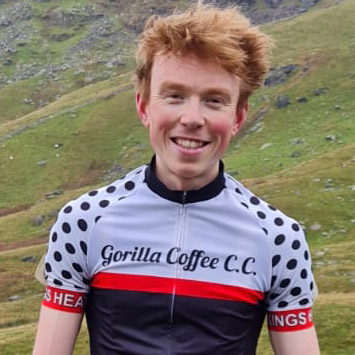Cycling can be a jargon-strewn minefield for newcomers and the Tour de France is no different.
If you're daunted by the racing lingo, or getting to grips with the multi-coloured wardrobe of Tour de France leaders' jerseys and the classifications they represent, then we've got your back.
We've also covered the way in which Tour de France prize money is distributed in a separate article, as well as the Tour de France bikes and who's riding what.
Our guide to commonly used Tour de France terms and what they mean will help you follow this year's action.
Common cycling phrases and what they mean
Attack
A sudden acceleration designed to distance a rider's opponents, often but not always in the mountains.
Autobus
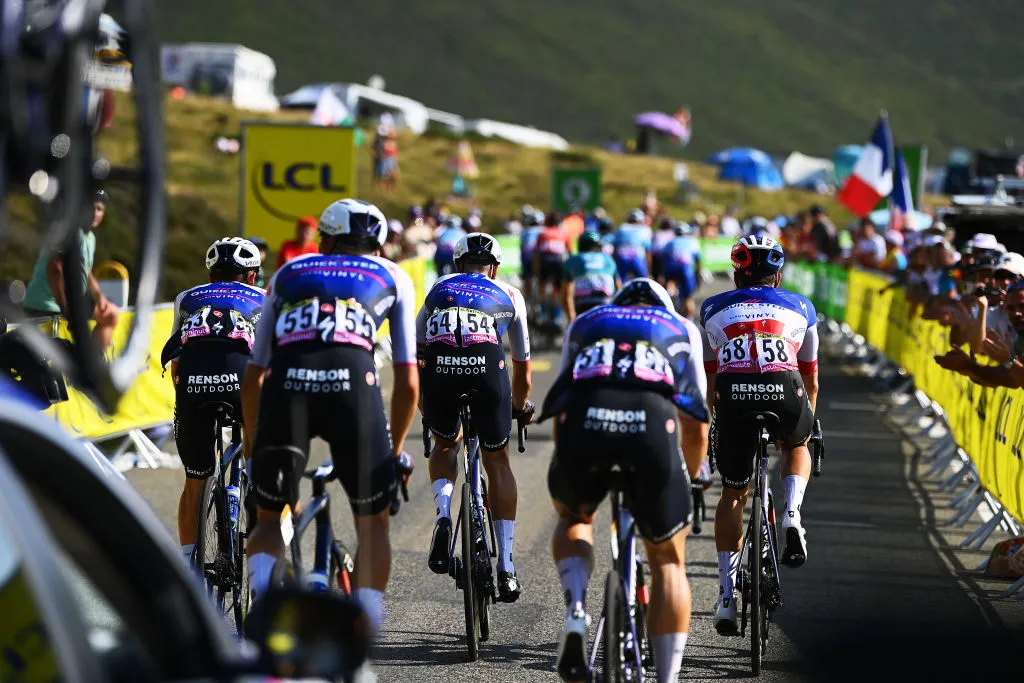
Every Tour de France stage has a time limit and the autobus forms on the mountainous days when non-climbers from every team work together to finish inside the time limit (see below). Otherwise, they'll be swept up by the broom wagon (see below).
The autobus is also known as the grupetto.
Baroudeur

An aggressive rider who specialises in breakaways (see below) in the mould of Team Bahrain Victorious's Matej Mohorič. They might target the combativity award (see below).
Barrage
Meaning blockage in this context in French, a barrage is when the commissaires (see below) stop team vehicles from driving up to their riders at the front of the race.
This is usually to prevent the cars impacting the race, for example when the gap between the breakaway (see below) and peloton (see below) is less than a minute.
Bidon
The French word for a water bottle; many roadside fans will try to collect discarded bidons as souvenirs (although the UCI officially banned the practice of discarding empty bottles in 2021).
Un bidon collé/collant is a sticky bottle (see below).
Breakaway

A small group of riders (or sometimes an individual), who accelerate away from the main bunch during a stage.
Breakaway riders are not always going for the win though. Sometimes, the objective is to "show the jersey" and get their team sponsors on TV (une échappée télé).
Sprinters may join a breakaway to collect points in the green jersey classification (see below).
Broom wagon
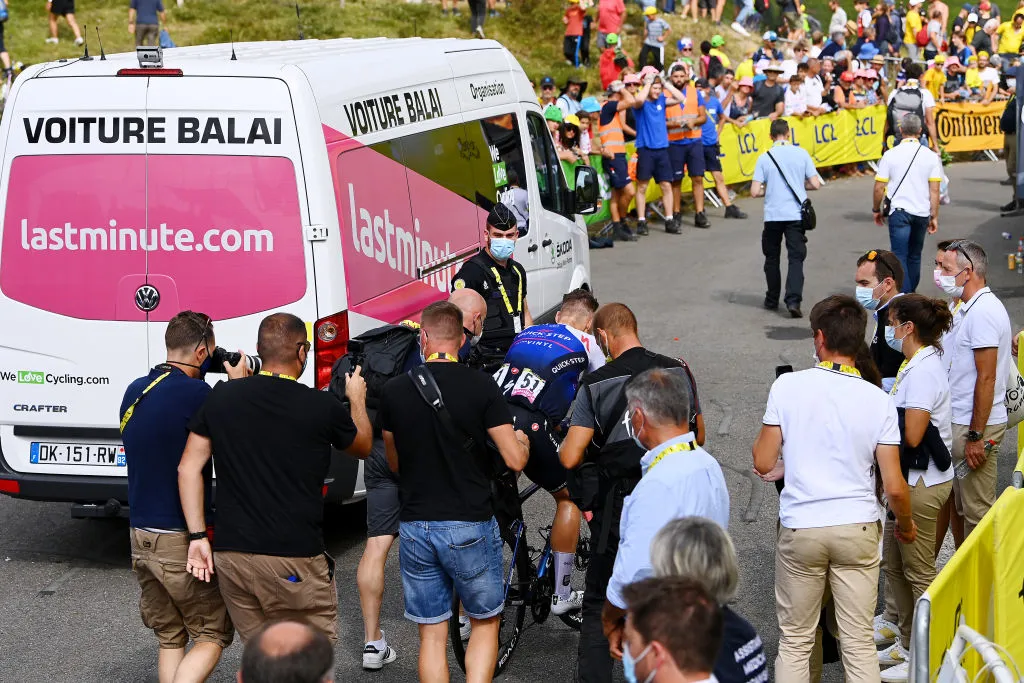
The vehicle at the back of the race, which metaphorically sweeps up riders struggling to make the time cut due to injury or fatigue. In fact, they're more likely to step off their bike into the team car.
Bunch sprint

Flatter stages will usually finish with a bunch sprint – a high-octane, hell-for-leather battle for stage honours between the fastest sprinters in the peloton.
Though the peloton arrives at the finish together in a bunch sprint, it is the sprinters and their lead-out riders (see below) who contest the stage win.
Chasse patate
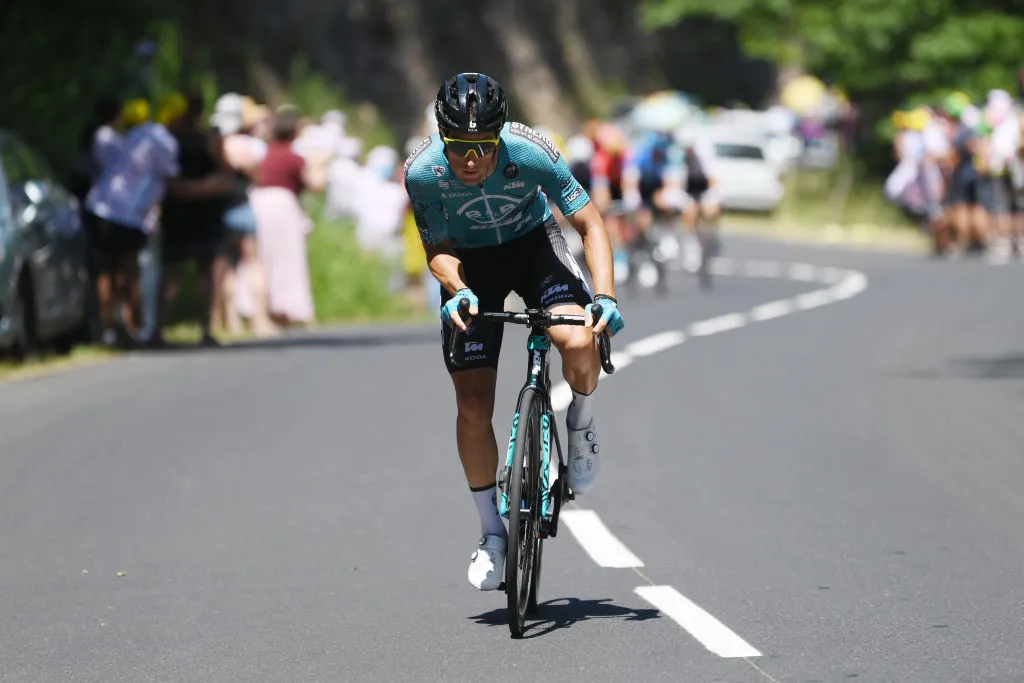
Wild-goose chase in French, literally potato chase; when a rider is stuck between the breakaway and the peloton, with no chance of bridging the gap.
Combativity award
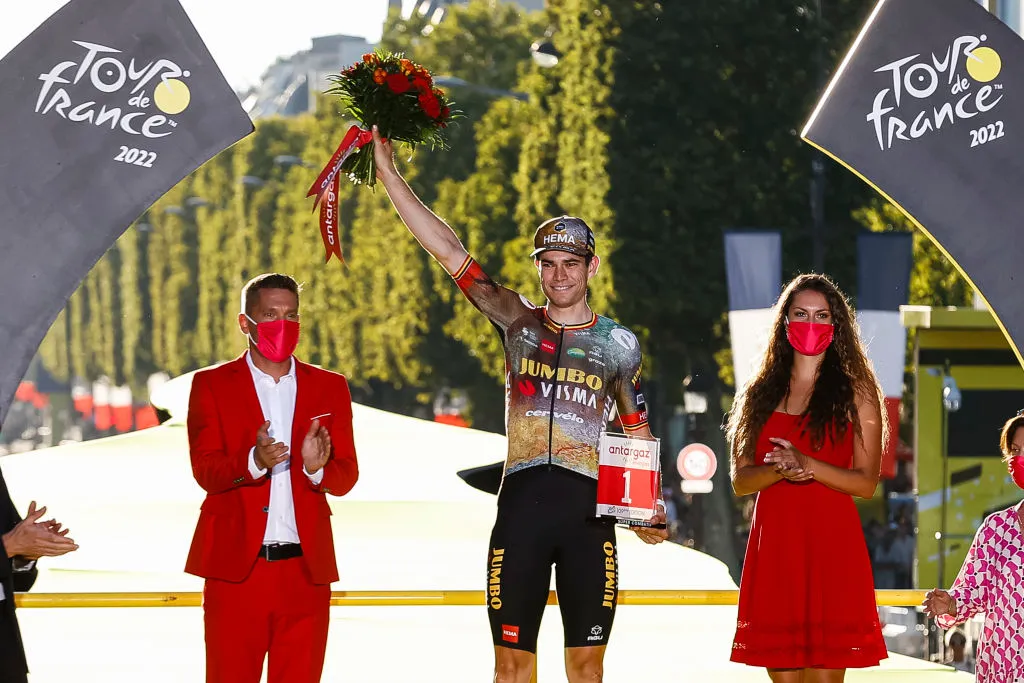
Awarded each day to the most aggressive rider according to the race commissaires.
The combativity award rewards the rider who animated the stage by initiating a breakaway, repeatedly attacked or spent a long time in front of the bunch.
The winner can be spotted easily the next day thanks to their red race numbers. An overall combativity award is also given at the end of the race.
Commissaire
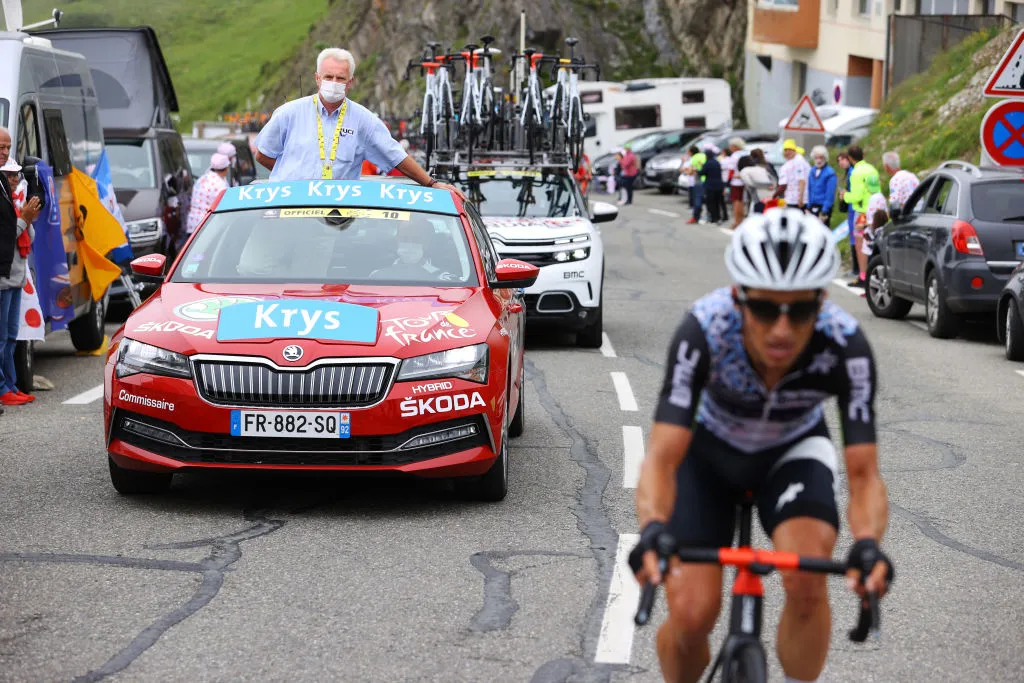
The official(s) who adjudicate the race; they hand out fines in Swiss Francs and demote, or even disqualify, riders if rules are broken.
Directeur sportif
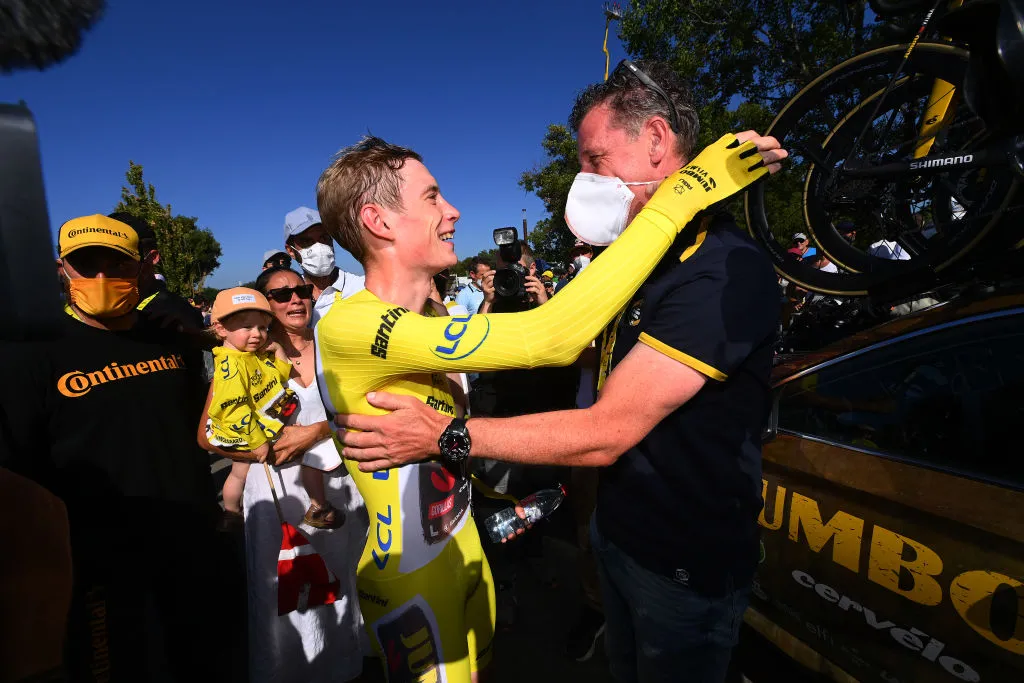
A team’s race-day director; the master strategist; the person gesticulating wildly and conveying tactics out of the team-car window. Some teams prefer 'sports director'.
Domestique
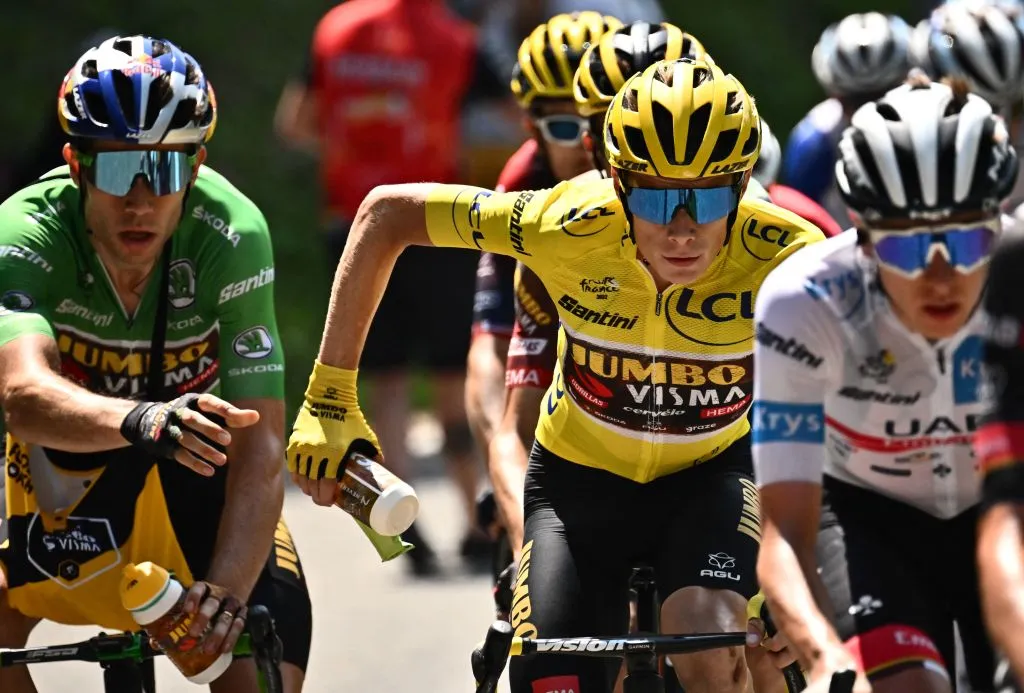
The unsung heroes of the team, selected to look after their team leader. Domestiques keep their lead riders safe, fed and watered, and will work to chase down breakaways or try to dictate the pace of the stage.
The French, however, use the more egalitarian équipier or Italian word gregario to describe team helpers.
Echelon

Echelons are splits in the peloton (see below) caused by a team increasing the pace through strong crosswinds.
Riders fan out in a diagonal line across the road as they shelter from the wind behind and to the side of the person in front. At the back of the line, there's little shelter from the side wind and even the strongest riders will struggle to hold the wheel. As riders lose contact, the bunch splinters into smaller groups called echelons.
This tactic is more common in the Spring Classics, but it can work on the windswept west coast of France.
Confusingly, the French call an echelon une bordure.
Feed zone

Lunchtime. Each stage has a dedicated feed zone, where the riders knock the pace off to collect musettes (see below) from their team soigneurs (see below).
Flamme rouge
The one-kilometre-to-go marker, denoted by a red air bridge, under which hangs a red kite.
General classification
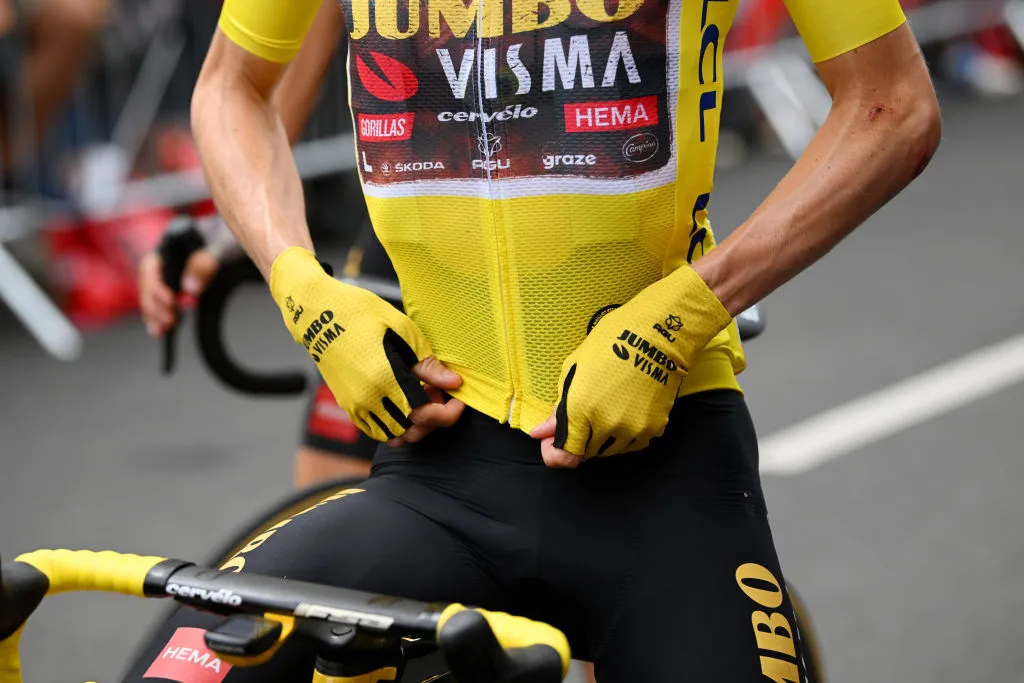
Each rider’s finishing time is collected after the day’s stage. The general classification sorts the riders according to their cumulative time, plus or minus any bonuses or penalties.
The rider who has taken the least time to complete the race so far wears the fabled yellow jersey.
Grand Départ
The start of the race. This year’s Grand Départ is in Lille, France, but it's not uncommon for it to start in other countries.
Simply, le départ is the start of each stage and l'arrivée is the stage finish.
Grand Tour
Cycling’s three most prestigious stage races, each lasting three weeks, the Tour de France, Giro d’Italia and Vuelta a España are known as Grand Tours.
Grand Boucle
Literally the 'big loop', the Grand Boucle is an arguably undeserved nickname for the Tour de France. These days, the race doesn't visit the whole of the country.
Grimpeur

A climber; a rider who's best uphill and may go for King of the Mountains (see below) points.
Intermediate sprint
As well as the finish line, each stage features an intermediate sprint, where there are points and prize money to be won for the first riders across it.
King of the Mountains

One of the Tour de France’s secondary prizes, the mountains classification ranks the first riders across each classified climb in the race.
The tougher the climb, the more points there are available for that ascent. The leader of the mountains classification is the King of the Mountains and wears the polka-dot jersey.
Lanterne rouge
Named after the red light hung on the back of a train, the lanterne rouge is the rider placed last on the general classification.
Ironically, in the past riders competed to finish last in order to gain invitations to money-spinning post-tour circuit races called criteriums.
Lead-out rider
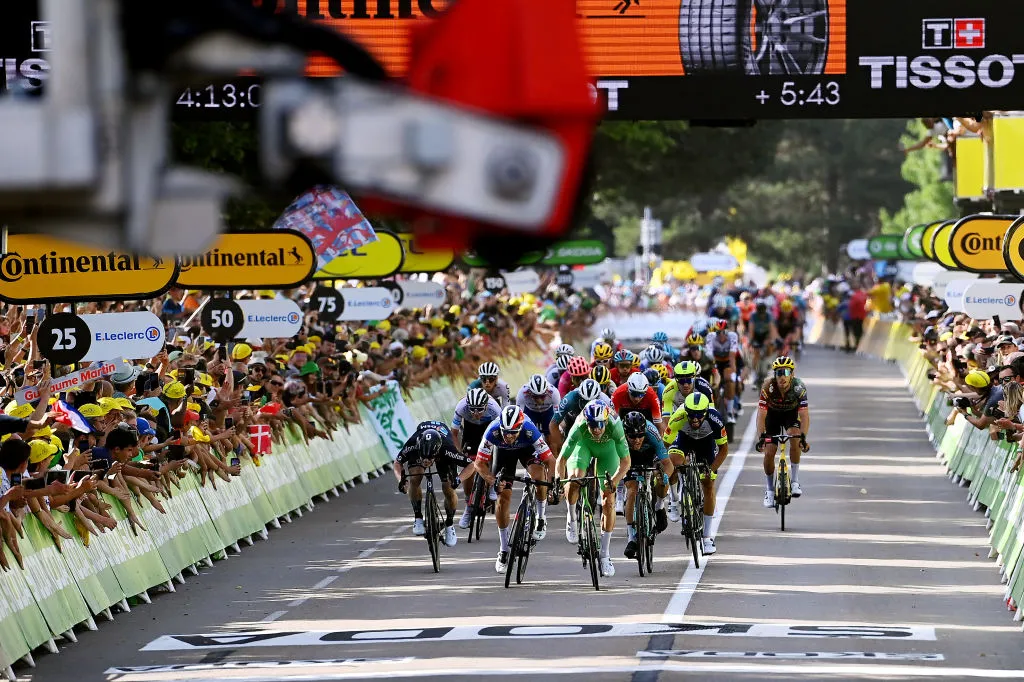
This rider's job is to guide their team's sprinter through the frenzied final hundred metres of a bunch sprint.
They shield them from the wind and leave them in the best position possible before peeling off.
Maillot jaune / yellow jersey

The iconic yellow jersey, or maillot jaune, is worn by the general classification leader. Tadej Pogačar (UAE Team Emirates) won the yellow jersey last year.
Maillot vert/green jersey

The green jersey is the prize awarded to the points classification leader. Usually dubbed the sprinters’ classification, due to more points being available on flatter stages, Biniam Girmay (Intermarché - Wanty) won it last year.
Maillot à pois/polka-dot jersey
A distinctive white jersey with red polka-dots, awarded to the leader of the mountains classification. Richard Carapaz (EF Education - Easypost) wore the polka-dot jersey on last year's podium.
Maillot blanc/white jersey
The white jersey is worn by the highest-placed young rider in the general classification. All riders younger than 26 on 1 January of the year following the race are eligible for that year’s youth classification. Remco Evenepoel (Soudal - Quick-Step) won the category in 2024.
Mechanical

A rider's worst nightmare; a puncture or other mechanical issue, such as a dropped chain, that causes them to pull over.
A team's most valuable riders will get a spare bike from their mechanic or a teammate, ideally of the same height, will give them their bike. Less important riders will have to change wheels instead.
If the team car is not in sight, the rider will have to rely on the neutral service (see below) car for assistance.
Musette
A small cloth shoulder bag handed out in the feed zone, containing a rider’s food and extra bidons to help them avoid bonking (la fringale).
Nature break
No, not a civilised pique-nique at a leafy French aire d'autoroute (service station). A nature break is when the riders slow down or stop for a wee.
Neutral service

A car or motorbike carrying mechanics, spare bikes and wheels to assist riders who have a mechanical if their team car is not close by.
Shimano took over the job from Mavic in 2021.
Parcours
The ‘course’ or route the race is taking.
Peloton
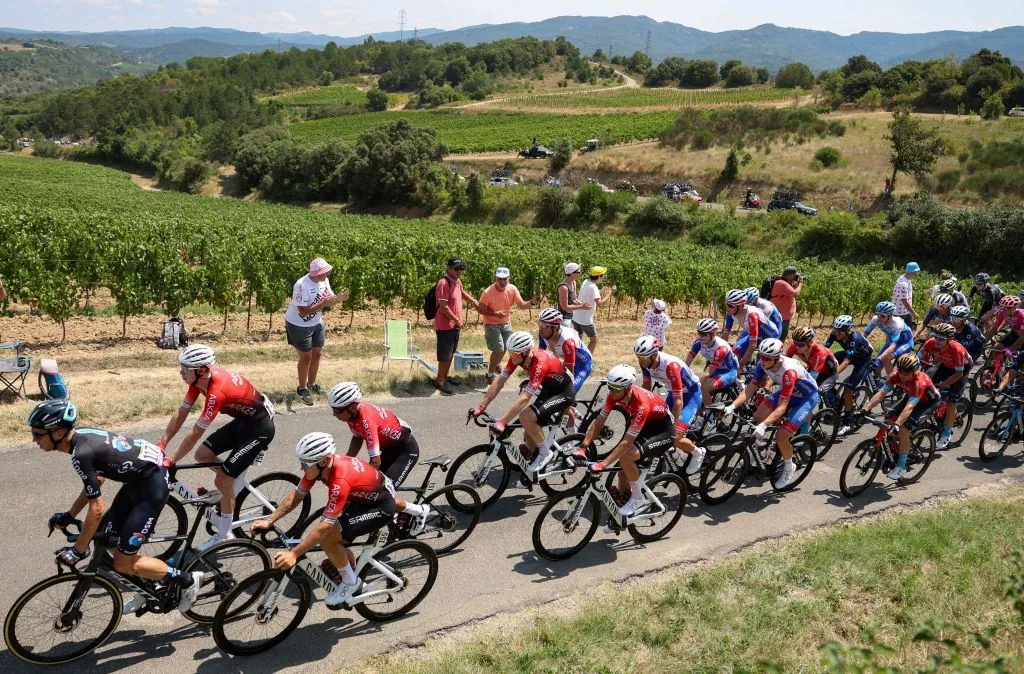
The peloton is the main bunch of riders during the race.
Points classification
The top finishers in each stage and at each intermediate sprint are awarded points according to their position. Those points are added together to form the points classification, the leader of which wears the green jersey.
Rouleur
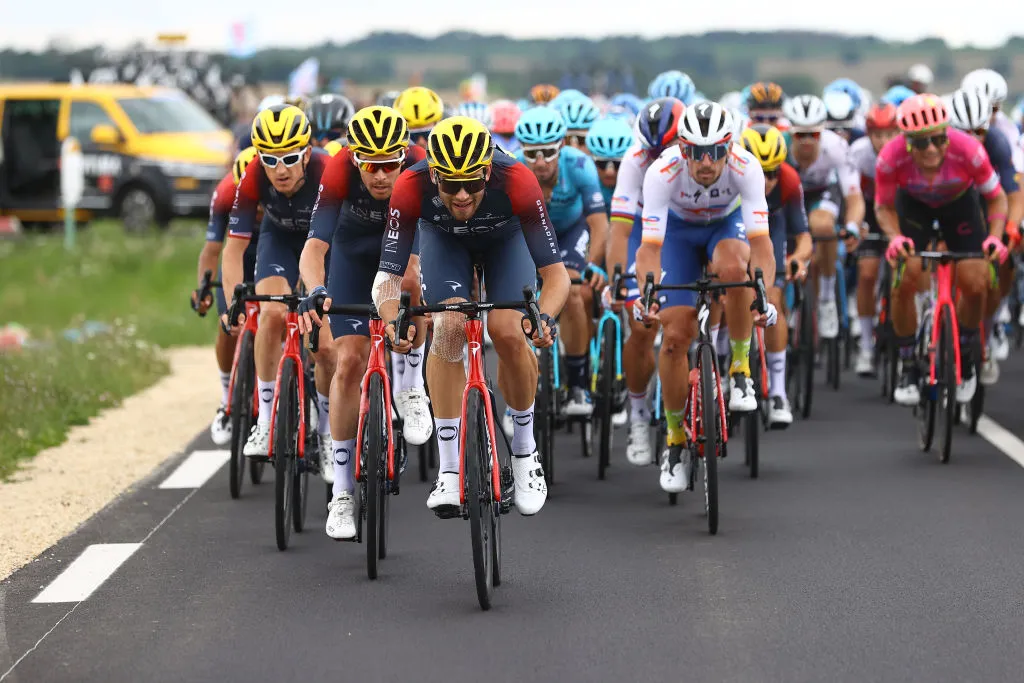
An all-rounder and often one of the hardest riders in the peloton; a rouleur can excel on all different terrain and often makes for an excellent domestique.
Soigneur
The unsung hero of a team’s staff behind the scenes; the soigneur (also known as a 'swannie' in English-speaking teams) is responsible for looking after riders off the bike and handing out musettes, bidons and extra layers of clothing during the race.
Sprinter
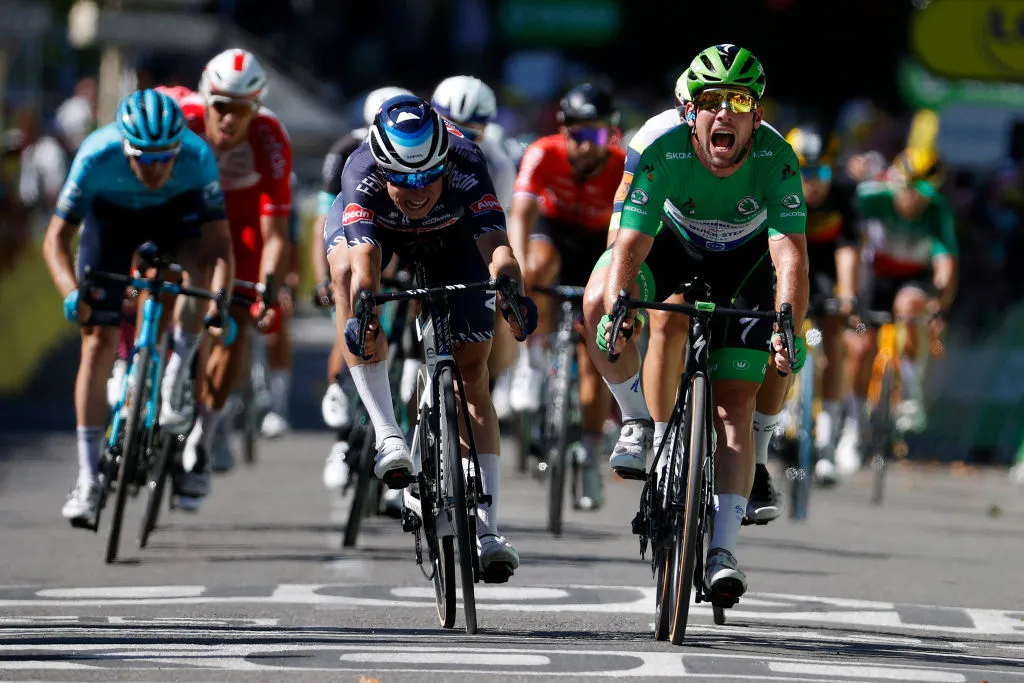
Capable of stunning bursts of acceleration over short distances, the sprinters slug it out with their counterparts in the peloton on the flatter stages.
Sprint train
Sprint trains form ahead of a bunch sprint, with team-mates providing a wheel for their sprinter to follow through the chaos that unfolds.
At the back of the train will be the lead-out rider with the team’s sprinter on his wheel, ready to burst for the line at the latest possible moment.
Sticky bottle
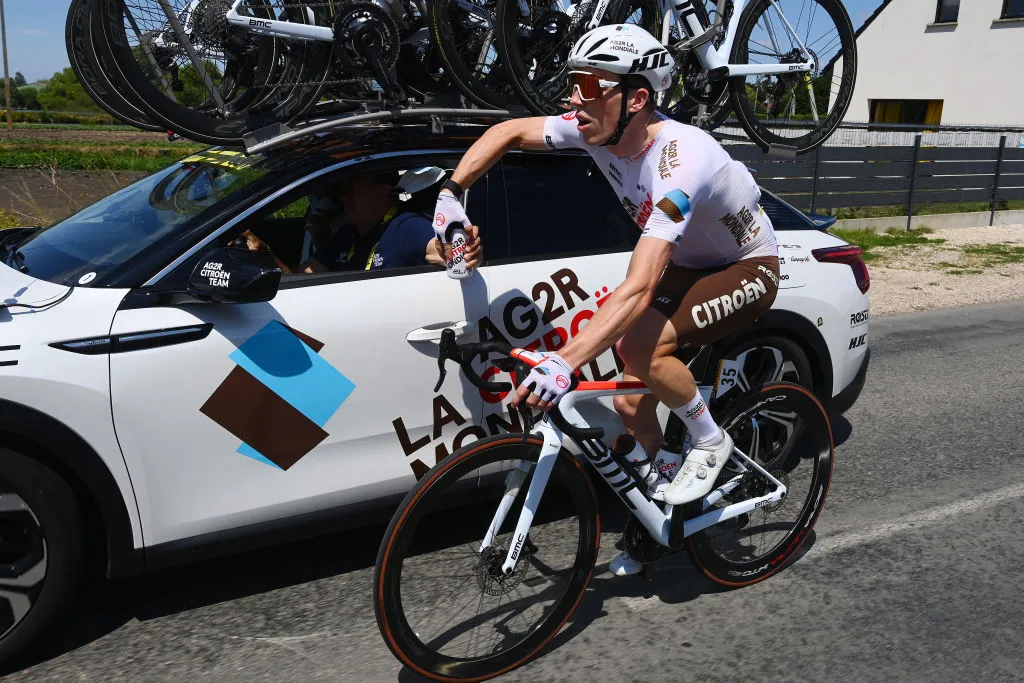
When a directeur sportif hands a bottle out of the team car to a rider who holds on longer than strictly necessary, getting a coup de pouce (helping hand) from the car's motion.
Three-kilometre rule
On sprint stages, under the three-kilometre rule riders delayed by a crash or mechanical within the final three kilometres of the race will be awarded the same time as the group they were in at the time of the incident.
Intended to calm the race for the position in the finale, the rule doesn't always have the desired effect.
Seven stages of this year's Tour will see the rule extended to 5km.
Team classification
The team classification ranks each team according to the cumulative time of their top three finishers on every stage. The team classification leaders may – but don’t always – wear yellow helmets to distinguish them in the peloton.
Team time trial
There is no team time trial again this year. A team’s time is calculated at the fifth rider to cross the finish line.
Time trial
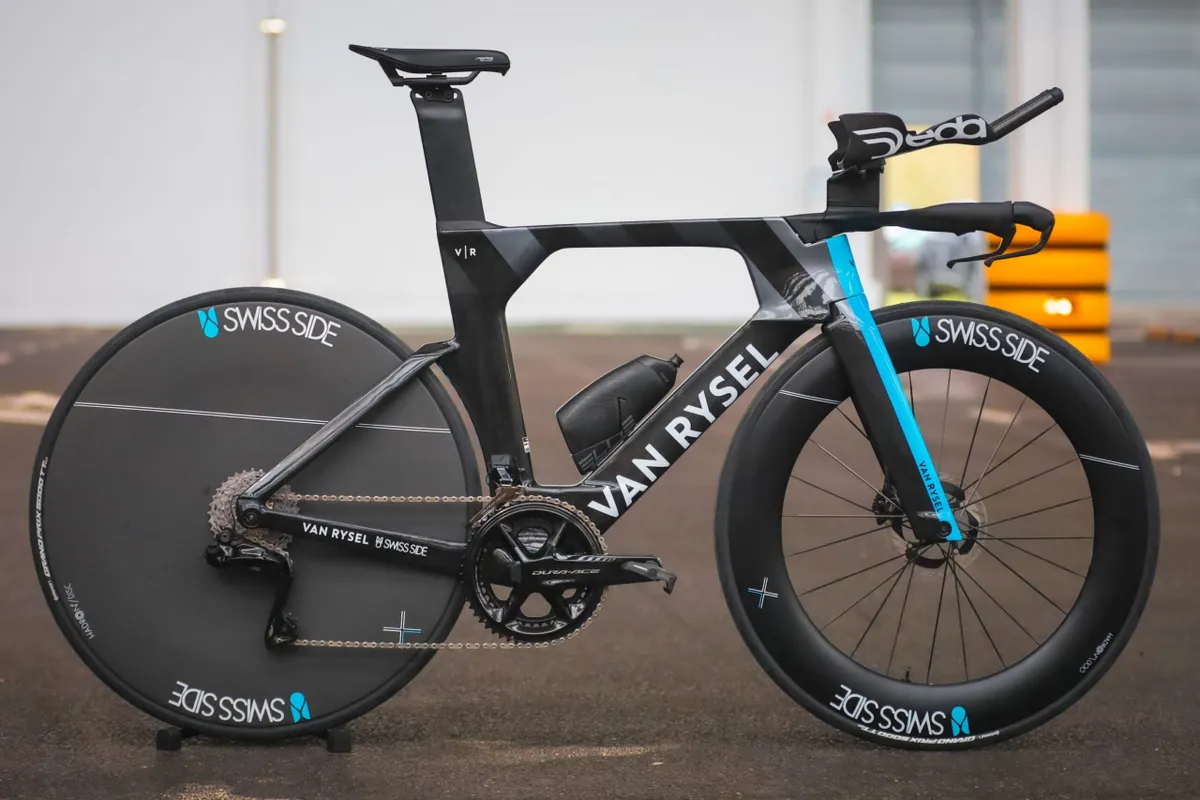
Riders set off individually, in reverse general classification order, on specialised time trial bikes with the aim of finishing the stage in the quickest time.
Often dubbed the ‘race of truth’, an individual time trial can result in big changes in the general classification.
Time limit/cut
Riders must finish each stage within the time limit. This is based on a percentage of the stage winner’s time and varies according to the severity of the day.
Sometimes, the commissaires show discretion if racers finish hors délai – if not, they’re eliminated from the race.
More from the Tour de France
- New Cervélo R5 hiding in plain sight at the Tour de France
- Visma-Lease a Bike is trialling carbon-spoked Reserve wheels at the Tour de France
- Seven remarkable numbers behind Tadej Pogačar's Tour de France success
- Is this Colnago V5Rs with ENVE aero extensions Tadej Pogačar’s mountain TT bike?
- How to watch the 2025 Tour de France


